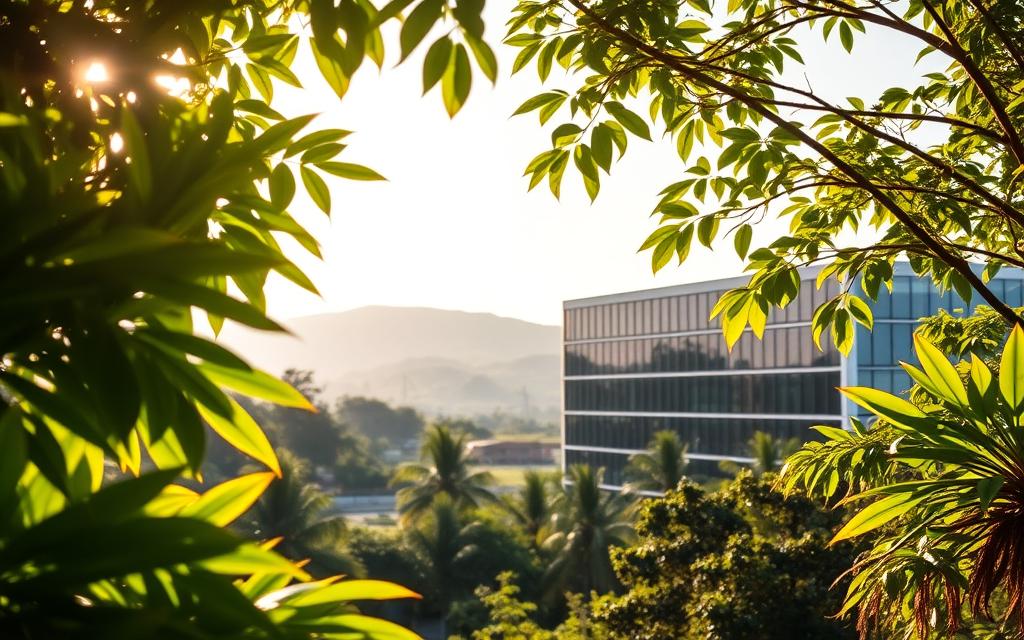Get answers to 'Can children get Costa Rica residency?' Understand the eligibility and application process for minors with Costa Rica Immigration Experts.

How to Transition from Rentista to Permanent Residency
Over 10,000 foreigners are drawn to Costa Rica annually, seeking a better quality of life in this Central American paradise. For many, the initial step towards making this dream a reality is obtaining a Rentista visa, which allows individuals to reside in the country by proving a steady income. However, the path to long-term stability and a deeper connection with the Costa Rican culture lies in transitioning to permanent residency.
Costa Rica Immigration Experts (CRIE), with over 20 years of experience, have guided numerous clients through this process, helping them achieve their dream of living in Costa Rica. By upgrading to permanent residency, individuals can enjoy enhanced legal rights, freedom from ongoing income verification, and a more stable life.
This article will provide a comprehensive guide on how to successfully make this transition, covering the essential aspects of the immigration process and the benefits that come with permanent residency in this vibrant country.
Understanding Costa Rica’s Residency System
Understanding the intricacies of Costa Rica’s residency system is crucial for those looking to relocate. Costa Rica offers a variety of residency options tailored to different lifestyles, making it an attractive destination for foreigners. The country’s residency system is designed to accommodate various needs, from temporary to permanent residency.
The Difference Between Temporary and Permanent Residency
Temporary residency in Costa Rica is granted for a specific period and can be renewed under certain conditions. It is ideal for individuals who are not ready or do not qualify for permanent residency. On the other hand, permanent residency offers more stability and is available to those who have held temporary residency for a certain period and meet specific requirements.
The key differences between temporary and permanent residency lie in their duration, renewal requirements, and the legal rights associated with each status. For instance, temporary residents may need to renew their status periodically, whereas permanent residents enjoy a more stable status without the need for frequent renewals.
Overview of the Rentista Program Requirements
The Rentista program is designed for individuals with a steady income who are not retirees. To qualify, applicants must provide proof of a guaranteed monthly income of $2,500 for at least 24 months or a $60,000 deposit in a Costa Rican bank. This program is particularly appealing to those who wish to enjoy Costa Rica’s lifestyle without working locally.
For those considering the Rentista program, it is essential to check their eligibility and understand the application process, which can be facilitated by services like CRIE, ensuring a smooth transition towards residency.
Benefits of Upgrading to Permanent Residency Status

Transitioning from Rentista to permanent residency status is a significant step towards a more stable life in Costa Rica. This change brings numerous benefits that enhance the overall quality of life for residents.
Legal Rights and Privileges of Permanent Residents
Permanent residents in Costa Rica enjoy expanded legal rights and privileges. They have the right to work legally without restrictions, start businesses, and participate fully in Costa Rican society. By becoming a permanent resident, individuals can access the national healthcare system, ensuring affordable medical care for themselves and their families. Additionally, public education becomes available, offering quality learning opportunities at reduced costs.
Freedom from Income Verification Requirements
One of the most significant advantages of permanent residency is the freedom from ongoing income verification requirements. Temporary residents must regularly verify their income to maintain their status, but permanent residents are exempt from this obligation. This freedom provides greater financial flexibility and peace of mind, allowing individuals to plan for the future without the burden of frequent paperwork and renewals.
How to Transition from Rentista to Permanent Residency

Obtaining permanent residency is a significant milestone for Rentista holders, requiring a thorough understanding of Costa Rica’s immigration process. To achieve this status, individuals must first fulfill the foundational requirements set by Costa Rican immigration authorities.
The Three-Year Waiting Period Requirements
To be eligible for permanent residency, Rentista holders must maintain their temporary residency status for at least three years. During this period, consistent proof of income is crucial, and applicants must comply with all requirements, including registering with the Costa Rican social security system (CCSS) and avoiding extended absences from the country.
Preparing Your Documentation Package
A well-prepared documentation package is vital for a successful application. This includes updated financial records, a clean criminal background check, and apostilled documents. Ensuring that all documents are accurate and complete will streamline the application process.
Submitting Your Application to Immigration Authorities
The final step involves submitting the application to the Dirección General de Migración y Extranjería (DGME). This includes scheduling an appointment, completing the necessary application forms, and paying the required fees. Ensuring that all forms are accurately completed and that the necessary proof of financial stability is included is crucial for a smooth process.
Essential Documentation for Permanent Residency Application

To successfully transition from a Rentista to a permanent resident, gathering the necessary documentation is key. The process involves compiling a comprehensive set of documents that meet Costa Rica’s legal standards.
Required Legal Documents and Their Authentication
The core legal documents required for a permanent residency application include a valid passport with an entry stamp, a birth certificate, and a federal criminal record. Each of these documents must be apostilled for authenticity. If applicable, a marriage certificate should also be apostilled. All documents not in Spanish must be translated by an official translator recognized by Costa Rican authorities. This step is crucial for ensuring that the application is processed without delays.
Proof of Compliance with Temporary Residency Obligations
Demonstrating compliance with temporary residency obligations is another critical aspect of the application process. This includes providing evidence of CCSS (Costa Rican Social Security) payments, tax compliance certificates, and proof of maintaining legal status throughout the three-year period. Additionally, applicants may need to show integration into Costa Rican society through utility bills, bank statements from local financial institutions, or other evidence of establishing roots in the country.
Organizing the documentation package in a clear and logical manner is essential for efficient processing by immigration officials. This includes ensuring that all required documents are included and properly authenticated, which can potentially reduce delays in the application review process.
Common Challenges and How to Overcome Them

Costa Rica’s residency process, while straightforward on paper, often presents challenges that can complicate the transition from Rentista to permanent residency status. Applicants must be prepared to address these challenges to ensure a smooth application process.
Dealing with Documentation Issues and Apostille Requirements
Documentation issues are a common hurdle in the residency application process. Ensuring that all documents, including birth certificates and police clearances, are properly apostilled and translated into Spanish is crucial. Applicants should verify the authentication requirements for each document to avoid delays.
Organizing documents into a clear application packet with labeled documents and a checklist can help minimize errors and speed up the review process.
Navigating Processing Delays and Administrative Hurdles
Processing delays within the Costa Rican immigration system can be frustrating. To mitigate this, applicants should regularly monitor their application status and follow up with the relevant authorities as necessary.
Administrative hurdles, such as changing requirements or inconsistent information, can also be challenging. Seeking professional guidance from immigration lawyers or local specialists can provide valuable support and help navigate these complexities.
Working with Costa Rica Immigration Experts (CRIE)

With decades of combined experience, Costa Rica Immigration Experts (CRIE) is the go-to solution for residency applications in Costa Rica. CRIE has helped many clients achieve their dream of living in Costa Rica, boasting over 20 years of experience and thousands of successful residencies.
How Professional Assistance Expedites Your Application
Professional support is key to a smooth residency transition in Costa Rica. Working with experienced immigration lawyers and local specialists can simplify the process and help you avoid common pitfalls. Their expertise ensures your application is accurate, complete, and submitted on time.
By guiding you through the documentation process, CRIE ensures all paperwork is apostilled and translated correctly, streamlining the application process and reducing the risk of delays or rejections.
CRIE’s 20+ Years of Experience in Residency Applications
Costa Rica Immigration Experts (CRIE) has been a trusted partner for individuals seeking residency in Costa Rica for over 20 years. Their extensive experience in handling thousands of successful residency applications provides clients with unparalleled expertise in navigating Costa Rica’s complex immigration system.
CRIE’s established relationships with immigration officials and intimate knowledge of the system’s nuances allow them to track applications effectively and address any issues that arise promptly, making them one of the most trusted immigration firms in the country.
Conclusion
After three years of temporary residency, individuals can apply for permanent residency, a status that provides lasting benefits in Costa Rica. This significant milestone is achievable by following a well-structured pathway that includes maintaining temporary residency in good standing, gathering required documentation, and ensuring compliance with all immigration regulations.
Permanent residency in Costa Rica offers numerous benefits, including freedom from income verification requirements, access to public services, and the legal right to work. It also provides a clear path to potential citizenship, making it an attractive option for retirees, investors, and individuals with a steady income.
Working with experienced professionals like Costa Rica Immigration Experts (CRIE) can simplify the application process, making it more efficient and less stressful. With their 20+ years of experience, CRIE can guide applicants through the complexities of the residency application process.
For a personalized consultation, please contact CRIE at +506 8706-3888, +506 8373-2085, or +1-305-906-6784 (USA/Canada). You can also visit their website at www.crie.cr or email info@crie.cr to start your journey to permanent residency in Costa Rica.


